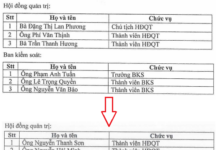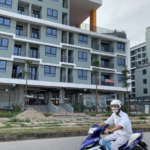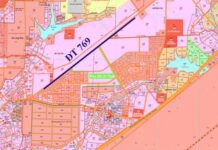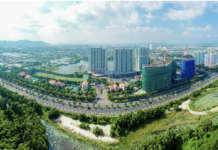Two Decades of Desolation
Over the years, satellite cities were envisioned to alleviate pressure on urban centers, expand living spaces, and provide housing opportunities for a vast population. However, the reality has fallen short of expectations. Some areas lack synchronized transportation infrastructure, essential amenities like healthcare, education, and commerce; others face legal hurdles, leaving projects incomplete and residents’ dreams of a home in limbo.
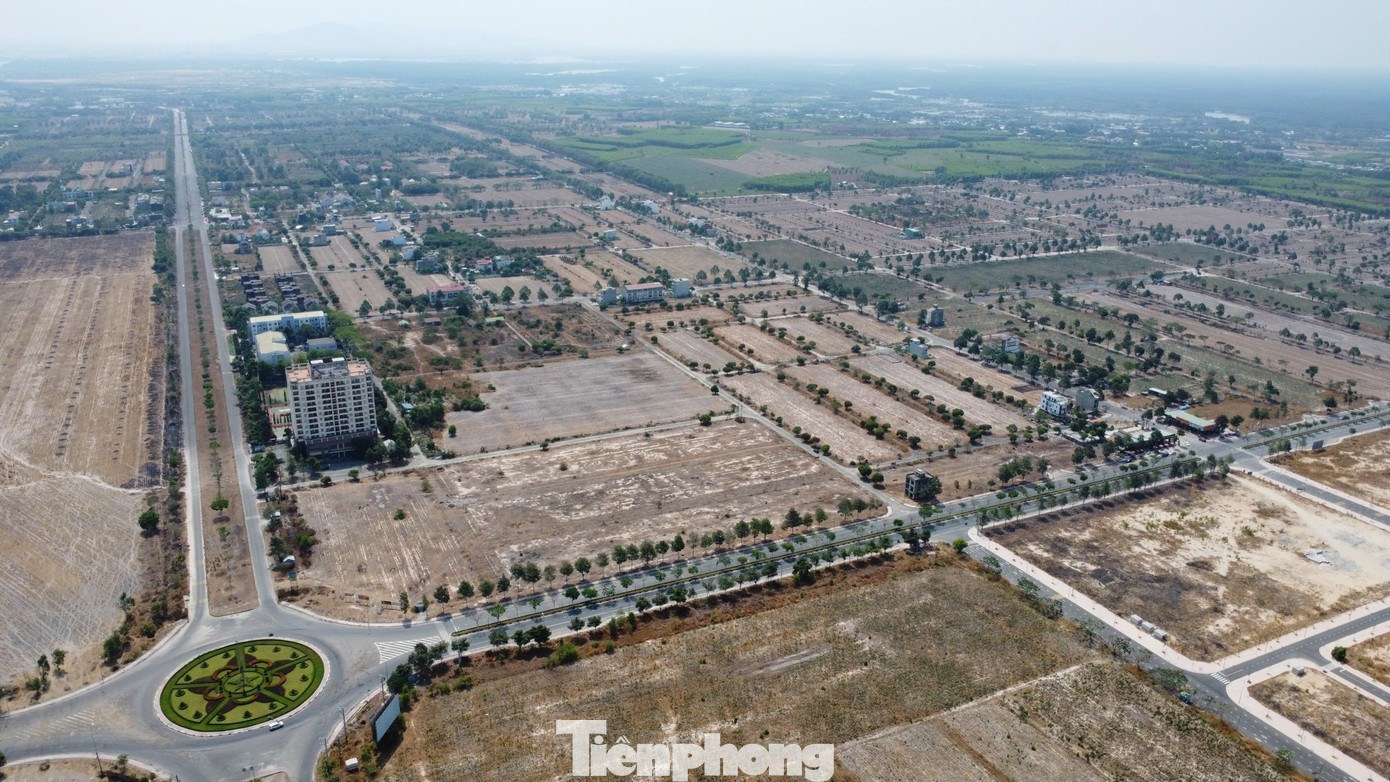
Despite infrastructure investments, the absence of social amenities leaves Nhon Trach devoid of residents.
Statistics reveal that the Ho Chi Minh City region and its neighboring provinces host 18 satellite urban projects exceeding 100 hectares, totaling over 16,500 hectares. Among these, eight projects are underway, serving as prime examples of satellite cities.
The momentum for satellite cities intensifies as provinces merge, expanding administrative boundaries and development spaces. This shift encourages population migration to emerging areas with growth potential. Yet, some satellite projects, despite modern amenities, remain eerily vacant.
In 1996, the Nhon Trach New Urban Area project was approved, spanning thousands of hectares, aimed at becoming Dong Nai Province’s Type II city with a projected 2020 population of 500,000 across 8,000 hectares, featuring industrial, residential, and urban zones.
By 2006, the Prime Minister approved adjusted plans, designating Nhon Trach as a hub for industry, commerce, services, tourism, education, and technology in Dong Nai Province.
The vision for Nhon Trach included a modern city with villas, neighborhoods, apartments, schools, supermarkets, cultural centers, and parks. Yet, after two decades, despite real estate booms, these grand urban developments remain eerily vacant, a peculiar sight.
Similarly, the 1,000-hectare Binh Duong New City, dubbed a miniature Singapore, was expected to accommodate 125,000 permanent residents and over 400,000 daily workers.
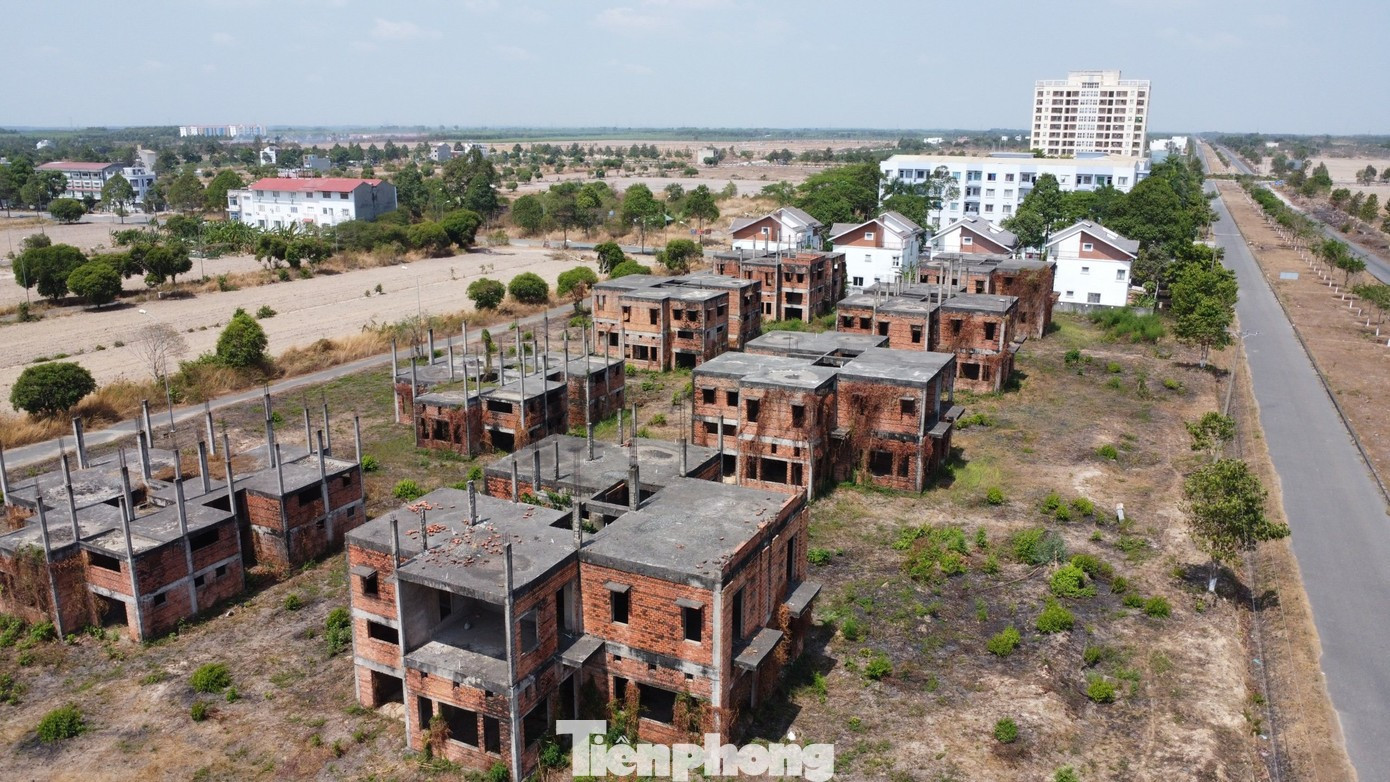
A villa abandoned for nearly two decades in Nhon Trach.
Over a decade ago, this mega-project sparked an unprecedented land frenzy in Binh Duong. Daily, hundreds of buyers nationwide flocked to purchase land. Rows of houses, villas, and apartments emerged, with rampant land subdivision sales.
However, after nearly a decade, these grand homes and luxury villas are overgrown with moss. Straight rows of houses along well-planned roads stand empty. Years of vacancy have led to deterioration, creating a ghostly atmosphere.
Why the Failure?
Mr. Nguyen Khanh Duy, Residential Sales Director at Savills Vietnam, notes that a successful satellite city must have residents. Modern infrastructure and amenities without inhabitants render it a “ghost town.”
In Ho Chi Minh City, some well-designed urban areas with excellent amenities still lack residents. The issue lies in location and connectivity. Satellite cities must be 30-40 km from the center, with efficient public transport to reduce commute times.
Additionally, property prices in these areas should be 40-50% lower than central areas to attract residents seeking affordable housing.
Urban planning expert Ngo Viet Nam Son emphasizes that location is just one factor. Successful models like South Saigon and Shanghai’s developments show that sustainable urban growth requires three elements from the outset.
First, a well-structured plan with clear direction and expert involvement. Second, pre-developed infrastructure, including schools, roads, and hospitals, to attract residents. Lastly, a logical implementation plan with prioritized steps to realize the vision.
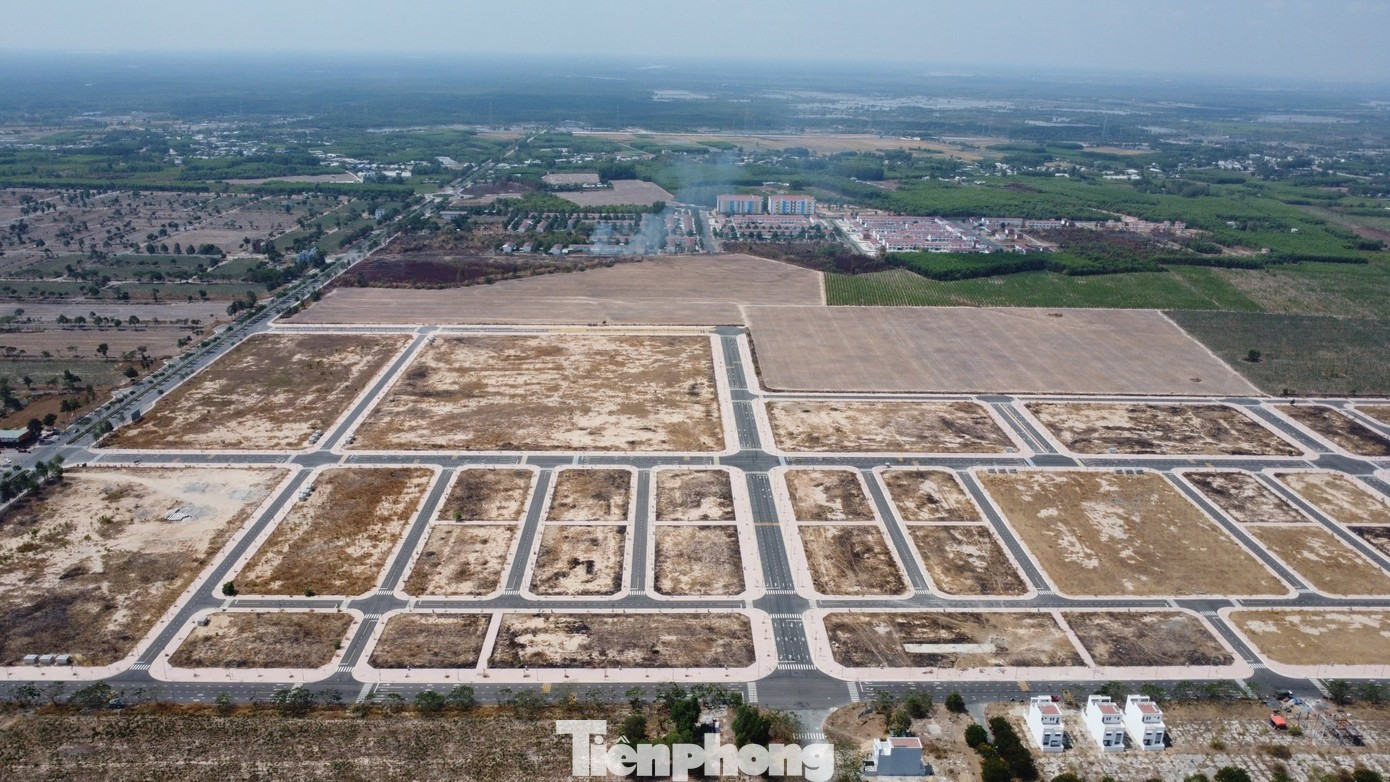
Satellite cities need incentives and special mechanisms for social housing and mid-range commercial housing projects.
The biggest hurdle for satellite cities is legal frameworks for planning and land clearance. In Transit-Oriented Development (TOD), the main challenge isn’t just infrastructure but also legal and financial mechanisms. Ho Chi Minh City’s Metro Line 1 exemplifies this, focusing on surrounding infrastructure rather than holistic TOD planning.
4 Criteria for Building Satellite Cities
Mr. Nguyen Van Khoi, Chairman of the Vietnam Real Estate Association, highlights the growing trend of population migration to satellite cities in major urban areas like Hanoi and Ho Chi Minh City.
In restructuring regional development, satellite cities should focus on four criteria: transportation connectivity (urban rail, highways, inter-regional metro); social infrastructure (hospitals, schools, malls, parks); economic opportunities (industrial zones, service areas, innovation hubs); and affordable housing.
To ensure proper development, satellite cities require incentives for social and mid-range housing. Flexible conversion of unsold projects to affordable housing is essential, along with simplified legal procedures, faster project approvals, and infrastructure risk management to protect residents’ interests.
Ho Chi Minh City’s New Term: Realizing the Vision of a World-Class ‘Super Metropolis’
The draft Political Report for the 1st Party Congress of Ho Chi Minh City’s Party Committee, term 2025-2030, outlines a clear vision: by 2030, the city aims to emerge as a civilized, modern metropolis, leading as a dynamic hub of innovation and integration in Vietnam’s industrialization and modernization efforts. It seeks to establish a prominent position in Southeast Asia, rank among the top 100 global cities, and become a high-income, livable urban center with a world-class innovation ecosystem.
Exciting News for Hanoi’s Condo Market: Anticipated Delivery of 46,600 Units Across 43 Projects in 2026–2027
Do Thu Hang, Senior Director of Research & Consultancy Services at Savills Hanoi, suggests that substantial supply could prompt price adjustments. However, she anticipates that such adjustments will be limited to areas with abundant land availability and underdeveloped infrastructure.











